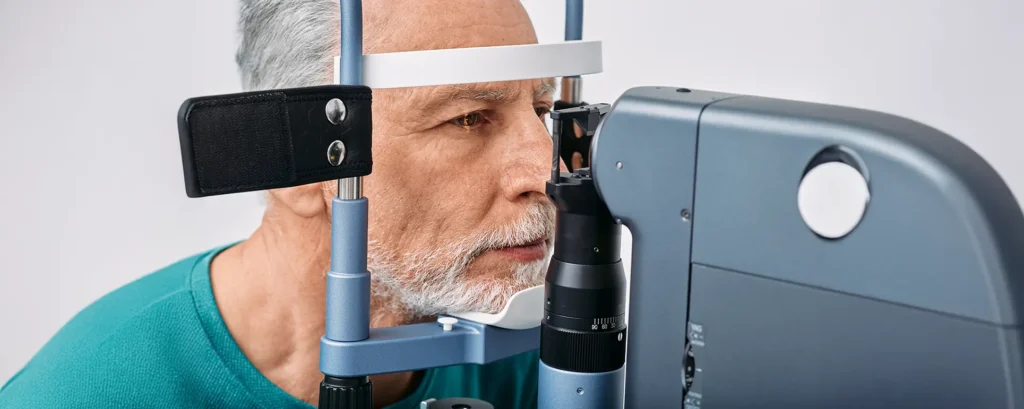If you’ve ever wondered what the future of vision correction might look like, you might be surprised to learn that researchers are now edging closer to creating a truly “bionic” eye lens. These devices, known as electromechanical intraocular lenses (IOLs), are designed to change their shape or curvature in response to electrical signals. That means, rather than being fixed at a single focal distance like most current implants, they could actively adjust focus—just as your natural lens once did before the onset of presbyopia or cataracts.
This is more than just a technological curiosity. If successful, electromechanical IOLs could solve one of the greatest limitations in modern cataract surgery: the loss of natural accommodation. Multifocal and extended depth of focus (EDOF) lenses have given patients a degree of spectacle independence, but none of today’s IOLs truly replicate the effortless shifting of focus that comes with a healthy, youthful crystalline lens. By harnessing the principles of electronics and biomechanics, scientists are aiming to bridge that gap.
In this article, I’m going to walk you through how electromechanical IOLs work, what early prototypes look like, the benefits they could offer, and the challenges that researchers still face. Think of it as your roadmap to understanding how we may be entering the age of bionic vision.
Why Do We Need Electromechanical IOLs?

Cataracts are one of the most common age-related conditions worldwide. Surgery to replace the cloudy natural lens with an artificial implant has become routine, and outcomes are excellent in terms of restoring clarity. But here’s the catch: most of those lenses are static. They cannot adjust to different distances.
Young eyes can focus on a nearby book and then instantly switch to the horizon, thanks to the natural lens flexing and changing curvature. This process, called accommodation, is lost once the lens becomes rigid with age or is replaced with a monofocal implant. Patients often end up relying on reading glasses or bifocals after surgery.
Multifocal IOLs try to solve this by splitting light into different focal zones. EDOF lenses stretch the focus range to give better intermediate vision. Accommodating IOLs attempt to move slightly within the eye to change focus. All of these approaches help, but none fully restore natural, seamless focusing ability. That’s where electromechanical IOLs come in. Instead of depending purely on optics, they incorporate electronic control systems to actively shift their power, potentially recreating accommodation in a more natural and dynamic way.
The Basic Principles of Electromechanical IOLs
At the heart of these lenses is the idea that a small electrical signal can trigger a mechanical change in lens shape. Think of it like a camera lens with built-in autofocus, except the adjustments are made inside your eye.
Here’s how it generally works:
- Embedded Actuators – Tiny electromechanical components, such as micro-electromechanical systems (MEMS), are integrated into the lens. When activated, they apply force that alters the curvature or thickness of the lens material.
- Electrical Control – The actuators receive input from an external or internal power source. Some prototypes use wireless induction systems to supply energy, while others explore bioelectric harvesting from natural eye movements or muscle activity.
- Dynamic Focusing – As the actuators reshape the lens, the refractive power changes, allowing the patient to focus on near, intermediate, or distant objects without effort.
- Feedback Mechanisms – Some designs even include sensors to detect where the eye is trying to focus, so the lens can respond in real time.
It’s an elegant solution that combines the precision of electronics with the transparency and biocompatibility of optical implants.
Early Prototypes and Designs
Prototypes of electromechanical IOLs are still very much in the experimental stage, but the ideas being tested are fascinating. Some of the approaches under exploration include:
- MEMS-based Lenses – These designs use micro-scale moving parts to reshape the optics. Think of them as microscopic machines operating inside the implant.
- Electroactive Polymers – Certain plastics can expand or contract when an electrical charge is applied. Researchers are investigating whether such materials can be layered into an IOL to alter its shape dynamically.
- Shape-memory Alloys – Metals that change form in response to heat or electricity may one day serve as the “muscles” inside the lens.
- Hybrid Designs – Some lenses combine passive optics with active electromechanical components to enhance depth of focus while still offering flexibility.
While none of these designs are yet ready for mainstream surgical use, animal models and early laboratory tests have shown promising levels of adjustability. The challenge, of course, lies in scaling these technologies down to a size that fits inside the eye while remaining safe, transparent, and durable for decades.
Potential Benefits for Patients
The promise of electromechanical IOLs is nothing short of revolutionary. Imagine regaining the ability to focus seamlessly across all distances—without glasses, contacts, or the compromises of current multifocal technology.
Some of the key benefits could include:
- True Restoration of Accommodation – Unlike multifocals that split light, electromechanical IOLs could offer continuous, adjustable focusing power.
- Reduced Visual Side Effects – Multifocal lenses can sometimes cause glare, halos, or reduced contrast sensitivity. Electromechanical lenses might avoid these issues by adjusting focus instead of splitting light.
- Customisable Vision – In theory, the focusing range could be fine-tuned for each patient’s lifestyle. Someone who spends more time reading could have enhanced near vision settings, while others might prioritise distance.
- Dynamic Adaptation – Some prototypes even consider future upgrades where the lens software could be reprogrammed after implantation.
Of course, we’re not there yet, but the direction of travel is clear: these devices could transform cataract surgery from a restorative procedure into a form of genuine visual enhancement.
Challenges to Overcome
If this sounds like science fiction, it’s worth remembering that major obstacles still stand in the way of clinical adoption. Among them are:
- Miniaturisation – Fitting electromechanical systems into a lens only a few millimetres thick is no small feat.
- Power Supply – Finding a reliable, safe, and long-lasting energy source inside the human body is a major challenge.
- Durability – An IOL must remain functional for decades. Moving parts, however small, must be able to withstand constant use without degrading.
- Biocompatibility – Materials must remain transparent and non-toxic, avoiding inflammation or rejection.
- Surgical Practicality – Surgeons will need ways to implant these lenses using familiar techniques, ideally without adding complexity or risk.
- Cost and Accessibility – Like all cutting-edge technologies, affordability will determine how widely available these lenses become.
Overcoming these hurdles will take years of research, collaboration between engineers and ophthalmologists, and careful regulatory review.
How Electromechanical IOLs Compare with Current Options
To put things in perspective, let’s briefly compare electromechanical IOLs with what’s available today:
- Monofocal IOLs – Reliable and widely used, but fixed-focus.
- Multifocal IOLs – Provide multiple focal points but can cause halos or reduced contrast.
- EDOF IOLs – Good intermediate vision, fewer side effects than multifocals, but limited near focus.
- Accommodating IOLs – Move slightly in the eye to mimic natural accommodation, but results vary and may diminish over time.
Electromechanical IOLs aim to combine the best of all worlds: the clarity of monofocals, the range of multifocals, and the adaptability of accommodating lenses—without their limitations.
The Road to Clinical Adoption

So when might you actually see these lenses available in surgery clinics? It’s difficult to predict exact timelines, but most experts suggest we are at least a decade away from routine clinical use. The research is progressing, but regulatory approval, long-term testing, and large-scale clinical trials will take years.
That said, the journey is already well underway. With advances in nanotechnology, biocompatible electronics, and surgical techniques, the foundations are being laid for a future where electromechanical IOLs could become the gold standard.
Electromechanical IOLs and the Concept of “Bionic Vision”
The term “bionic vision” isn’t just marketing hype. It reflects the idea of blending human biology with advanced technology to restore or even enhance natural function. Just as cochlear implants have revolutionised hearing loss, electromechanical IOLs could represent the parallel step for vision.
For patients, this could mean:
- Restoring not just clear sight but dynamic, flexible sight.
- Reducing dependence on glasses or additional surgeries.
- Potentially even upgrading vision beyond what was possible naturally, depending on future refinements.
Ethical and Social Considerations
Whenever we talk about bionic enhancements, ethical questions arise. Should such technology be used only for restoring lost function, or could it also be applied to enhance vision beyond normal human limits? Who will have access to it, and will it widen inequalities in eye care?
These are important discussions that researchers, clinicians, and policymakers will need to address. The line between medical necessity and elective enhancement could blur as technology advances.
FAQ: Electromechanical Intraocular Lenses
1. What exactly are electromechanical intraocular lenses?
Electromechanical intraocular lenses, often called “bionic lenses,” are experimental implants designed to replace the natural crystalline lens after cataract surgery. Unlike standard IOLs, which are fixed in their focusing power, these devices contain microscopic electromechanical components that can change the lens’s shape or curvature in response to electrical signals. This means the lens can actively adjust focus, recreating the process of accommodation that most people lose with age or after lens replacement surgery.
2. How do they differ from multifocal and accommodating lenses?
Traditional multifocal lenses split incoming light into several focal points, which gives patients vision at different distances but often at the cost of visual side effects such as glare or halos. Accommodating lenses try to move slightly within the eye, but results can be unpredictable and tend to fade over time. Electromechanical IOLs take a completely different approach by actively adjusting their focusing power. Instead of relying on optical compromises, they aim to provide smooth, natural vision at all distances by changing their physical shape, much like the youthful natural lens.
3. Are electromechanical IOLs currently available for patients?
No, they are still in the research and prototype phase. Although laboratory results and early animal trials have shown promise, there is a long road between early design and real-world surgical use. Clinical adoption requires years of safety testing, human trials, and regulatory approval. While the concept is exciting, patients should understand that electromechanical IOLs are not yet an option in any surgical clinic worldwide.
4. How would these lenses be powered inside the eye?
Powering an implant inside the human eye is one of the biggest technical hurdles. Current research is exploring several approaches, such as wireless inductive charging from an external source, micro-batteries sealed within the lens, or harvesting tiny amounts of energy from natural muscle movements and bioelectric signals in the eye. Each solution has pros and cons: batteries need long-term reliability, while wireless systems must remain safe and non-invasive. Researchers are working to strike the right balance between practicality, safety, and durability.
5. What are the main benefits electromechanical IOLs could bring to patients?
The most important benefit is the potential restoration of true accommodation—the ability to smoothly change focus from near to far without glasses. Beyond that, these lenses may reduce common visual side effects seen with multifocals, such as halos and loss of contrast. They could also be programmed or fine-tuned after surgery to suit an individual’s lifestyle, whether that means prioritising near work, computer tasks, or distance activities like driving. In the long run, electromechanical IOLs might even open the door to vision enhancements beyond natural human limits.
6. What risks or challenges still need to be solved?
There are several. The technology must be miniaturised enough to fit within the small dimensions of an IOL while remaining transparent and biocompatible. The moving parts must function flawlessly for decades, as implants cannot be easily replaced once inside the eye. Ensuring long-term power supply, avoiding mechanical wear, and preventing inflammation are all critical. In addition, surgeons need designs that can be implanted using familiar cataract surgery techniques without introducing excessive risk or complexity.
7. How long would an electromechanical IOL be expected to last?
Ideally, any intraocular lens should last for the rest of a patient’s life, as repeated replacement surgeries carry risks. That means an electromechanical IOL would need to maintain both its transparency and its moving function for decades, potentially 30 years or more. This is a tall order for a device with embedded electronics and mechanical systems, and proving this level of durability is one of the main barriers to clinical approval. Until long-term studies confirm their reliability, this remains an unanswered question.
8. Will the surgery to implant these lenses be different from cataract surgery today?
The goal is to make the procedure as close as possible to standard cataract surgery, which is already very safe and routine. Researchers are designing electromechanical IOLs to fit through the same small incisions and to be placed in the same capsular bag where today’s IOLs sit. That said, the complexity of the lens may mean that surgeons will require new training or slightly modified instruments. Ultimately, the more seamless the procedure is for surgeons, the more likely the technology will gain wide acceptance.
9. How much will electromechanical IOLs cost once available?
Like any cutting-edge medical device, electromechanical IOLs will almost certainly be expensive at first. Their early adoption may be limited to private clinics and patients willing to pay a premium. Over time, as production scales and technology matures, prices could fall, making them more widely accessible. However, affordability and equity of access will remain major concerns, especially if these lenses deliver superior outcomes compared to current options.
10. When might patients realistically expect to see these lenses in clinics?
Timelines in medical technology are always difficult to predict, but most experts agree that electromechanical IOLs are still at least a decade away from regular clinical use. Human trials may begin within the next 5–10 years, but widespread adoption will require proof of long-term safety, durability, and cost-effectiveness. In short, this is a technology to watch with excitement, but patients considering cataract surgery today should base their choices on currently available options rather than waiting for bionic lenses.
Final Thoughts
Electromechanical intraocular lenses are one of the most exciting developments in ophthalmology today. While still experimental, they offer a glimpse into a future where cataract surgery could give patients more than just clear vision—it could give them back the natural, dynamic focusing power of youth.
As with all disruptive innovations, the road ahead is filled with challenges, but the potential rewards are transformative. If successful, electromechanical IOLs could mark the beginning of true bionic vision, fundamentally reshaping how we think about sight, ageing, and technology’s role in healthcare.
References
- Doornaert, D., Glorieux, C., De Gersem, H., Puers, R., Spileers, W. & Blanckaert, J. (2013) Intraocular electro-optic lens with ciliary muscle controlled variable focus. Proceedings of the IEEE Engineering in Medicine & Biology Society (EMBC). doi:10.1109/EMBC.2013.6610219. Available at: https://www.researchgate.net/publication/257601427_Intraocular_electro-optic_lens_with_ciliary_muscle_controlled_accommodation (Accessed: 27 October 2025).
- Alió, J.L., Muftir, H., Piñero, D.P., et al. (2017) Accommodative intraocular lenses: where are we and where are we going? Eye & Vision, 4(25). doi:10.1186/s40662-017-0077-7. Available at: https://eandv.biomedcentral.com/articles/10.1186/s40662-017-0077-7 (Accessed: 27 October 2025).
- Meng, E., Lacour, S.P. & Taberner, A. (2017) MEMS enabled technologies for ocular applications, including intraocular lens systems. IEEE Transducers 2017 – 19th International Conference on Solid-State Sensors, Actuators and Microsystems, pp. 1-4. Available at: https://biomems.usc.edu/publications/2017/2017_Transducers_Ocular_MEMS.pdf (Accessed: 27 October 2025).
- Cabeza-Gil, I., Frechilla, J. & Calvo, B. (2023) Evaluation of the mechanical stability of intraocular lenses using digital image correlation. Scientific Reports, 13: 9437. doi:10.1038/s41598-023-36694-0. Available at: https://www.nature.com/articles/s41598-023-36694-0 (Accessed: 27 October 2025).
- Donnenfeld, E. (2024) Get ready for truly accommodating lens implants: how active electro-optic IOLs are shaping the future. Ophthalmology Management, April issue. Available at: https://ophthalmologymanagement.com/issues/2024/april/get-ready-for-truly-accommodating-lens-implants/ (Accessed: 27 October 2025).

